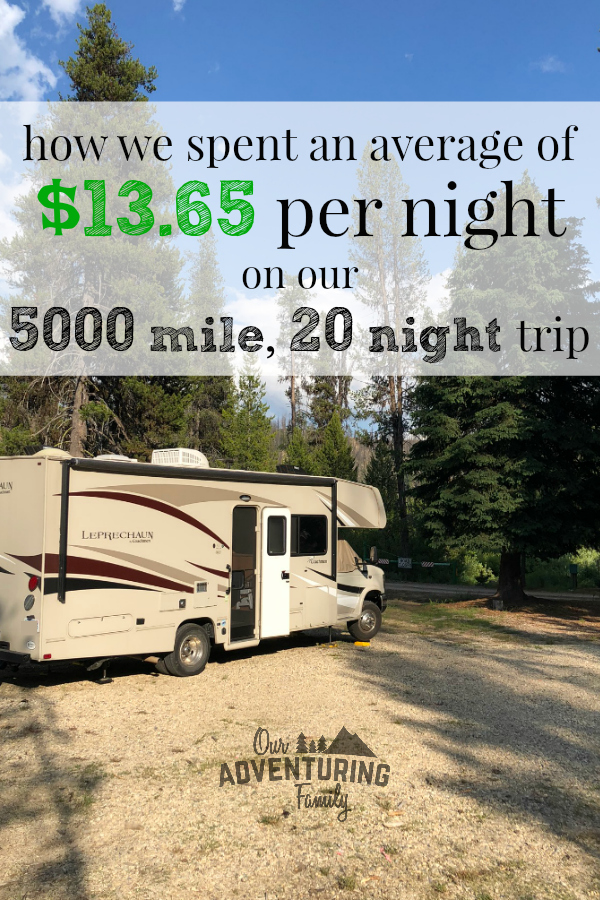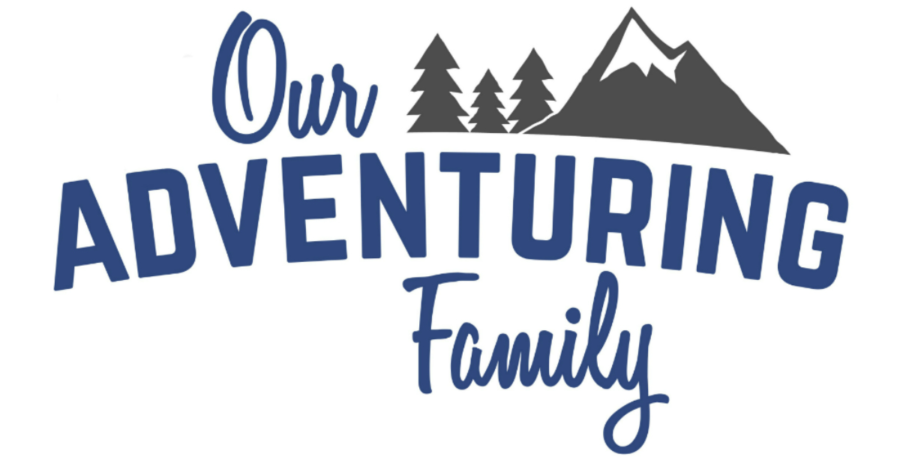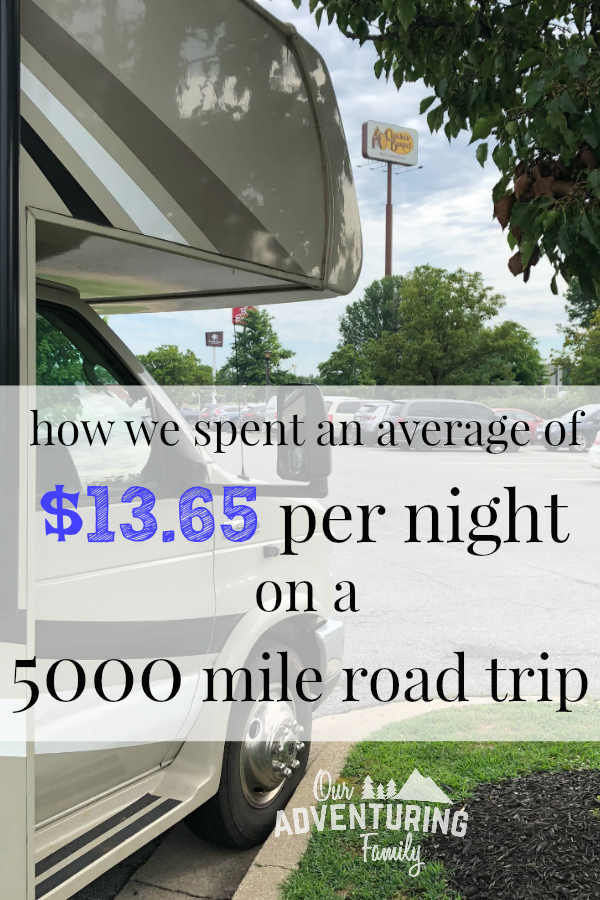This post may contain affiliate links. As an Amazon Associate I earn from qualifying purchases, but there is no additional cost for you. Please see my Disclosure page for more information.
We recently returned home from a three week, 5000+ mile road trip from Virginia to Idaho and back. We were gone 20 nights and spent a total of $273 on lodging, which averages to $13.65 per night.
So how did we keep our costs so low?
It took some research and planning, but mostly we timed our nightly stops to coincide with places we could stay for free. The costs we did incur were while at family reunions and spending time with family, not for actual travel days. We try to travel as cheaply as possible and wouldn’t use the amenities of a campground, so we rarely stay at campgrounds while we are in travel mode. On the other hand, we don’t mind paying for a campground if we will be staying put for at least a couple days.
It’s important to remember that if you want full hookups, a pool, a playground, and so on, you will have a hard time keeping your expenses to a minimum. If you don’t mind bare bones campgrounds or parking lots, you’ll have a much easier time keeping your costs low.
Where we stayed while on our road trip
- 1 night in a Cracker Barrel parking lot (quieter then WalMart!)
- 3 nights in WalMart parking lots
- 1 night in a truck stop parking lot
- 1 night in another free parking area (Tamarack Conference Center in WV has an RV overnight parking area in back)
- 0 nights on BLM land (we had planned on doing some boondocking just outside Badlands NP, but timing and a storm prevented that. There were some other spots we had thought to stay at, but when I got sick we had to change our itinerary.)
- 6 nights in grandma’s driveway ($50 for electricity; this was a longer stay than originally planned, but unavoidable once I got sick)
- 4 nights at our first family reunion ($38 for a national forest campground site)
- 4 nights at our second family reunion ($185 for a KOA campground site)
How to cut your camping costs while RVing
1. Moochdocking
Moochdocking is where you stay with family, friends, friends of friends, etc in their driveway or somewhere on their property. Water and electricity may be available, but the amps may not be high enough to run your A/C without popping the house breaker. It’s polite to offer to pay some money to help cover the water and/or electricity you used.
2. Boondocking
Boondocking is camping without hookups, usually on BLM (Bureau of Land Management) or National Forest land, but it can include WalMart and other store parking lots and truck stops. However, while you can usually stay up to two weeks in the same BLM or national forest site, store parking lots and truck stops are only for overnight stays.
It is good manners to purchase something from the store if you’re spending the night in a store parking lot, so plan your shopping trips to coincide with your overnight stops so you can buy the stuff you need anyway.
Some rest stops also allow overnight stays, but not all do, so do your homework. You don’t want to arrive at one, thinking you can stay there, only to find that overnight stays are not allowed.
3. National Forest; national, state, county, or city park campgrounds
These campgrounds usually have minimal amenities but that also means they’re usually pretty inexpensive. We’ve seen them for $30 or so a night.
The Forest Service campsite we stayed at for our family reunion was really a cabin that could be rented and the surrounding 6 or so campsites were thrown in as a bonus. The cabin had a propane-powered fridge and water heater. Two of the campsites had power stanchions, but the power only worked if the generator by the cabin was on.
The campsites had sewer and water hookups, but the sewer system was having problems while we were there and we couldn’t dump our tanks. Definitely not the fanciest campground, but for $45 a night for six families it’s hard to be too nitpicky.
My favorite part was that the campground was in a forest in the middle of nowhere and we had the entire campground to ourselves and didn’t have to worry about how much noise we made 🙂
4. Harvest Hosts
Harvest Hosts provide free camping sites at more than 830 wineries, breweries, farms, orchards, museums, and so on. While it is free to camp, you must arrive during business hours and you should plan on purchasing something from the on-site store. This is a great way to knock out your Christmas list! Stays are limited to one night.
We were going to stay at a Harvest Hosts museum site on our way out west, but as I ran the numbers I realized that we wouldn’t be able to arrive during business hours, so we had to take it off the itinerary.
Use this link to get 15% off your Harvest Hosts annual membership
5. Military campgrounds
If you or your spouse is Active duty, Reserves, National Guard, or retired military, many military bases have FamCamp campgrounds that you can use. They average about $25 per night, though some are even cheaper than that and a few are more expensive. Amenities are fairly basic, so keep your expectations on the lower side 🙂
6. Thousand Trails
Pay the Thousand Trails annual membership fee and you can camp at more than 190 campgrounds across the country without paying an additional fee. This means that the more frequently you stay at TT campgrounds, the less each night costs when averaged across the annual fee. Most have playgrounds, pools, and so on and are great for families.
Use this link to get $100 off your annual membership fee
7. Passport America
A Passport America membership will give you a 50% discount off regular campground fees at more than 1,800 campgrounds. Most have playgrounds, pools, and so on.
Use my ID (R-0313853) to get 15 months for the price of 12
8. KOAs and similar campgrounds
KOAs tend to be more expensive, but they do offer more amenities. Playgrounds, pools, giant bouncy pillows, mini golf, etc. Prices vary by location and season, so a flexible schedule will be the best option for finding lower prices.
*Bonus* The AllStays app
Harvest Hosts, Passport America, and KOA all have apps to make it easy to find campgrounds. We also use the AllStays Camp & RV app to find locations we can spend the night. You can apply filters to show WalMarts, rest stops, truck stops, Cracker Barrels, military FamCamps, BLM land, national forests, and much, much more.
Storms and illness on our way out west forced us to adjust our itinerary on the fly. The AllStays app was invaluable in helping us find safe spots to stay along that adjusted route.
What do you do to save money on camping fees when road tripping?


